Report
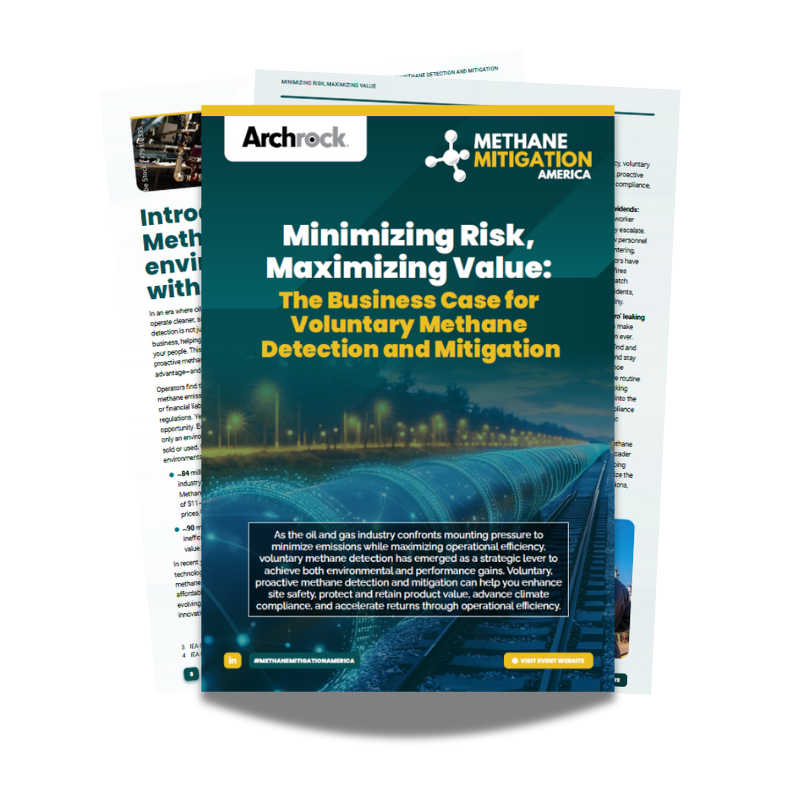
Sponsor Content: Unlocking the Value of Voluntary Methane Detection
The oil and gas sector is under growing scrutiny to curb methane emissions while also maximizing efficiency. One way forward is through voluntary methane monitoring, an approach that not only supports sustainability objectives but also drives measurable operational improvements.
Forward-thinking operators are leveraging methane detection to strengthen safety, safeguard product value, align with climate commitments, and unlock cost savings through more efficient operations.
In partnership with Archrock, this new report outlines the commercial and operational advantages of adopting voluntary methane detection. Inside you’ll gain insights on:
- Market trends and regulatory forces influencing methane management
- Primary emission points, including methane slip, rod packing, and blowdowns
- The economic case for proactive detection, backed by cost analysis
- Practical steps to integrate voluntary methane programs into daily operations
- Technology solutions that enable significant emission reductions
Download the report to see how leading operators are transforming methane detection into a strategic advantage, minimizing risk, improving efficiency, and staying ahead of evolving expectations.
Have insights you'd like to share with our 300+ decision-makers, innovators, and technical experts? Get in touch and let's make it happen.
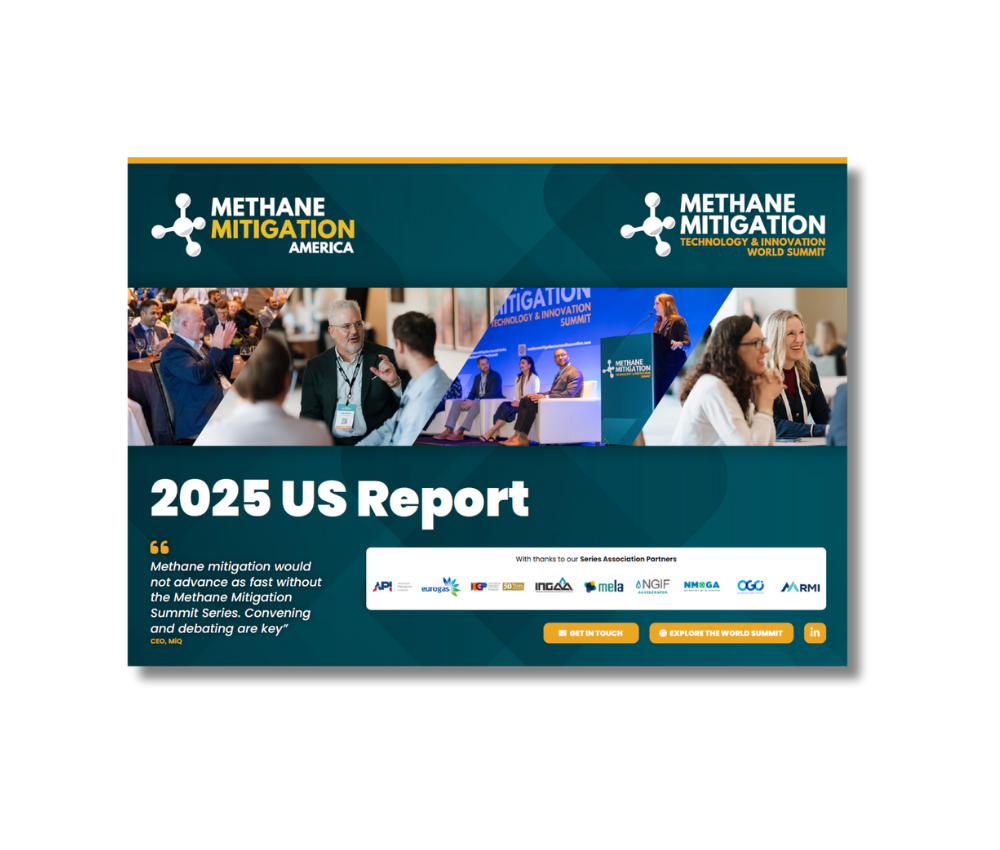
2025 Series Recap: Insights & Impact from the US Events
2025 has been a year of disruption for methane management in the US.
Federal policy rollbacks and evolving global import standards have created a fragmented regulatory environment, leaving operators to balance uncertainty with the need for progress. Meanwhile, market dynamics and investor expectations are transforming methane management from a compliance checkbox into a core business strategy.
Our 2025 US Report delivers exclusive insights from the Methane Mitigation Summit Series, featuring:
- 10 Key Takeaways from the America Summit – The trends shaping methane policy and technology today
- State of the Market Poll Results – Real-time operator perspectives on investment priorities and future strategies
- Technology Trends – How AI, data integration, and detection ecosystems are redefining methane management
- 2026 Preview – A first look at next year’s global summit and innovation roadmap Inside, you’ll discover how operators are responding to regulatory shifts, building resilient strategies, and leveraging innovation to stay ahead.
Hear directly from industry leaders driving real impact. Download your free copy now and position your organization for success in 2026 and beyond.
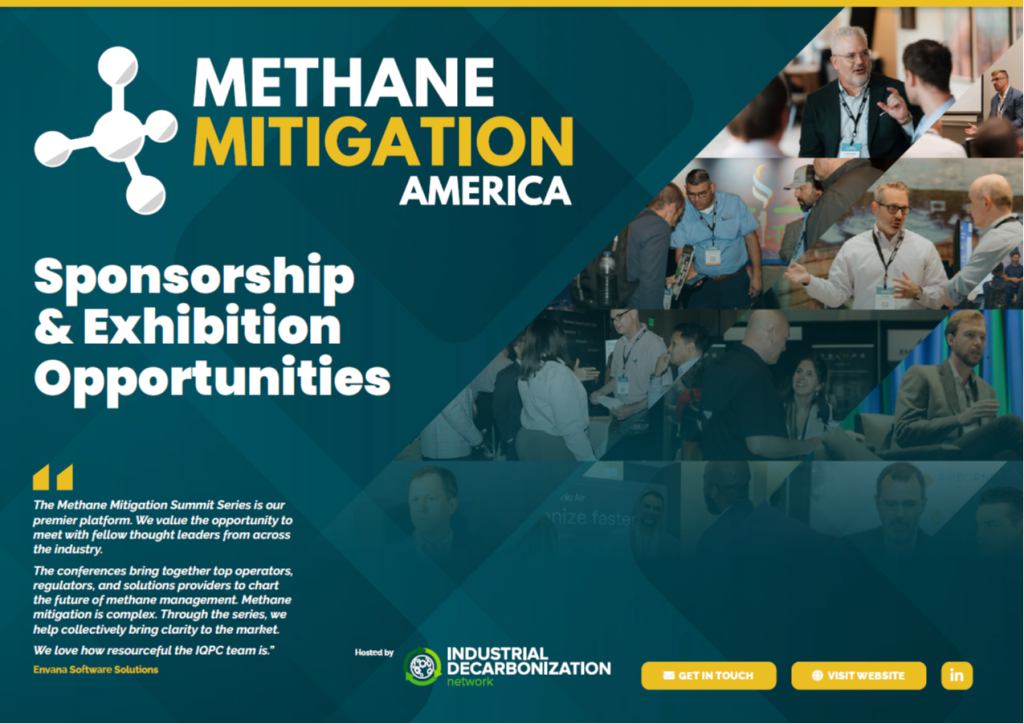
Sponsorship Prospectus - Methane Mitigation Summit
Explore the sponsorship and exhibition opportunities available at the Methane Mitigation America Summit.
Our attendees are looking to implement best practices to identify, measure, monitor and eliminate methane emissions, factor emissions reduction into operational planning and build a culture focused on methane mitigation.
Download the brochure today to discover how to amplify your brand and get your solution center stage!
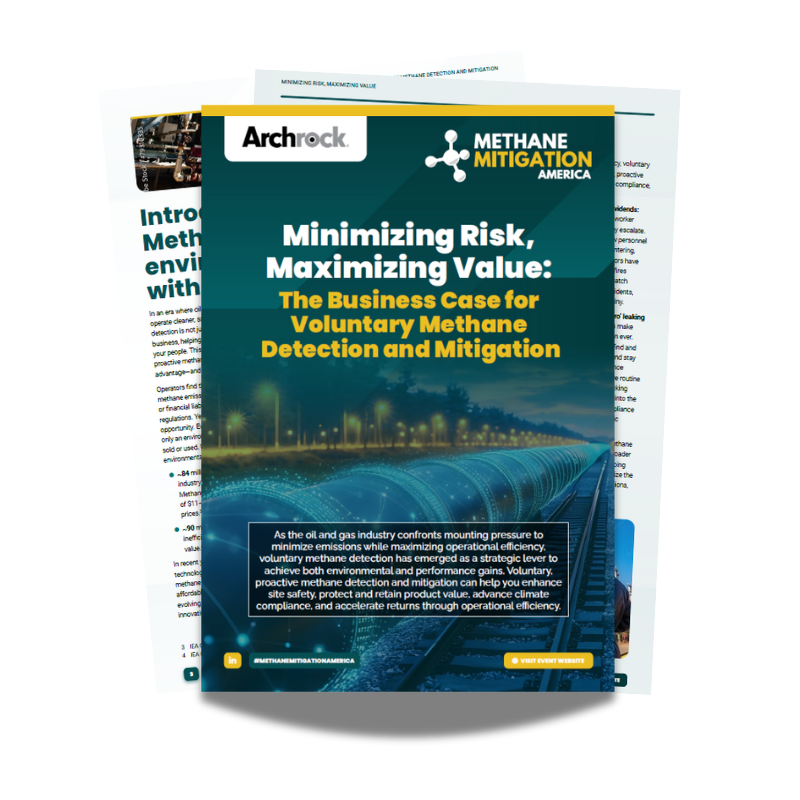
SPECIAL REPORT: The Business Case for Voluntary Methane Detection and Mitigation
As the oil and gas industry faces increasing pressure to reduce methane emissions while improving operational efficiency, voluntary methane detection is emerging as a strategic tool for operators, delivering both environmental benefits and measurable performance gains.
By taking a proactive approach, operators can enhance site safety, preserve product value, meet evolving climate goals, and boost returns through greater efficiency.
In this brand-new report produced alongside Archrock, discover the business case for voluntary methane detection and mitigation, and explore current perspectives on:
- Market and regulatory drivers shaping methane strategy
- Key emission sources such as methane slip, rod packing, and blowdowns
- The full business case for voluntary detection, including cost analysis
- How to operationalize voluntary methane detection
- Technology enablers powering near-zero methane operations
Download your copy today and learn how industry leaders are turning methane detection into a competitive advantage by reducing risk, capturing value, and staying ahead of the regulatory curve.

Report: Dissecting the U.S. Methane Regulation Landscape: Key Policies and Future Direction
With ongoing international climate efforts and growing pressure to meet the Paris Agreement targets, 2025 is expected to be a crucial year for evaluating global progress in curbing methane emissions and mitigating the effects of climate change
Delving into the regulatory and policy frameworks that will shape the future of methane mitigation in the U.S. and beyond, the ‘Dissecting the U.S. Methane Regulation Landscape: Key Policies and Future Direction’ report highlights the critical role that continued innovation, and collaboration will play in meeting national and global climate goals.
Download your copy of the report today to find out more.
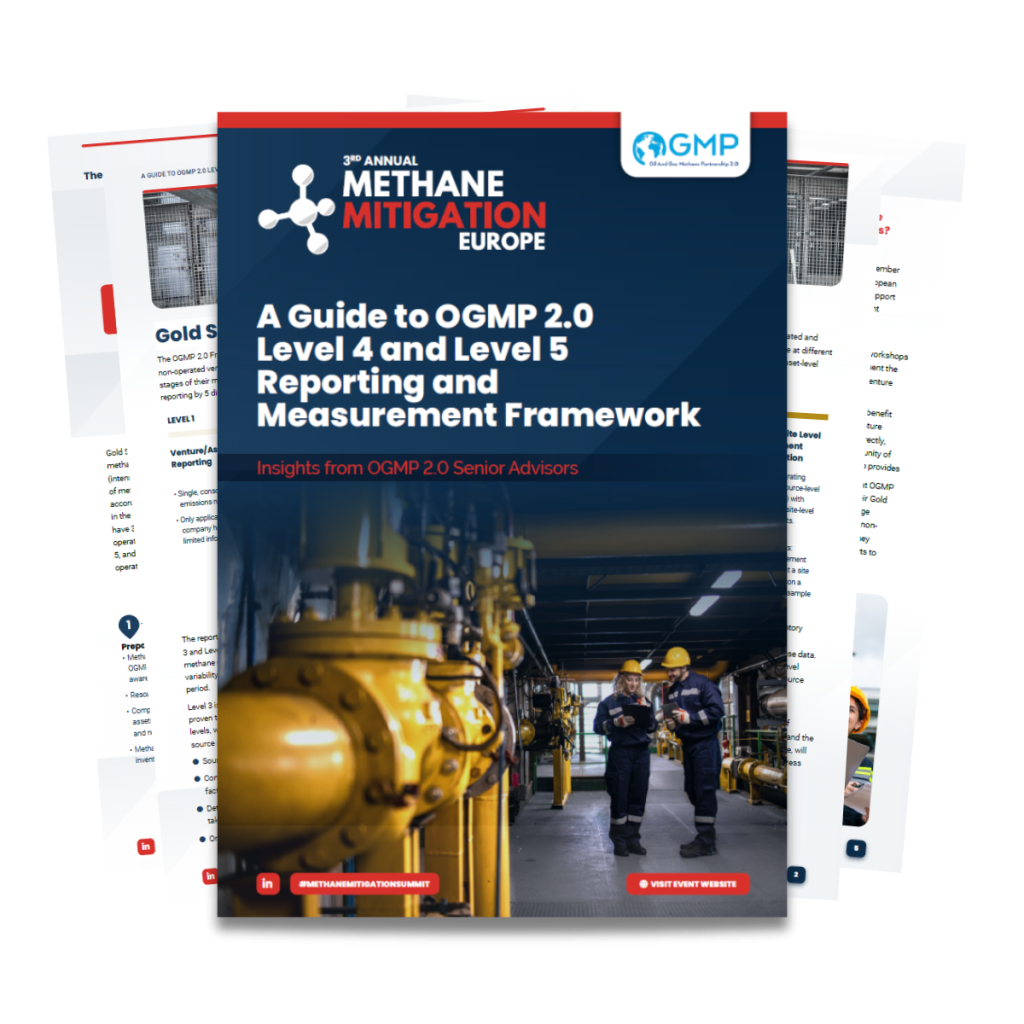
Free Industry Guide: OGMP 2.0 Level 4 and Level 5 Reporting and Measurement Framework
Download our free guide to uncover insights from OGMP 2.0 Senior Advisors as they uncover best practice for navigating OGMP 2.0, and provide you with expertise on:
- Gold standard reporting, including the recommended Level 5 reporting process Increasing data quality for a more effective methane strategy
- The most common challenges operators face when progressing from one reporting level to the next
- How the OGMP 2.0 framework aligns with regulatory requirements
- And more
The OGMP 2.0 framework helps oil and gas companies mitigate methane emissions by providing standardised guidelines for accurate monitoring, reporting, and reduction of methane leaks.
Produced ahead of the 2025 Methane Mitigation Europe Summit.
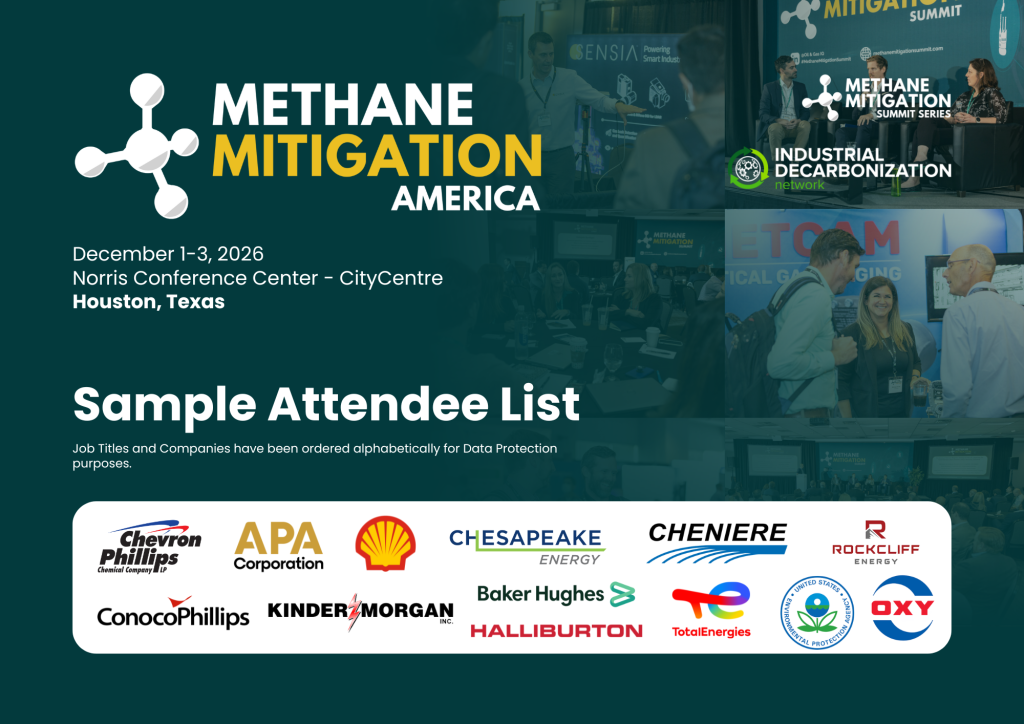
Methane Mitigation America Summit - Sample Attendee List
The Methane Mitigation Summit Series has welcomed over 1000 of the oil and gas industry’s leading professionals from across the globe, since it began in December 2022.
Our attendees are decision-makers, innovators, and technical experts leading the charge in methane reduction and industrial decarbonization.
They come from across the energy value chain, seeking actionable solutions to meet regulatory, environmental, and operational goals, including:
- Navigating Domestic Policy Flux – Engage with policy leaders and regulators to anticipate and adapt to evolving methane rules, ensuring compliance strategies remain flexible amidst regulatory shifts.
- Adapting to International Policy & Market Demands – Stay informed on tightening global methane standards to safeguard market access and remain competitive across borders.
- Building an Internal Business Case for Methane Management – Evaluate the ROI of methane reduction investments, considering technology selection, resource allocation, workflow optimization, and internal versus outsourced solutions.
- Technical Best Practice for Measurement, Data Management & Abatement – Move beyond find-and-fix: integrate predictive, preventative approaches by selecting the right mix of monitoring technologies, facility design adaptations, data systems, and abatement strategies tailored to specific operations.
- Financing for Reduction Projects – Access funding through internal capital, carbon markets, or sustainability-linked finance to bridge the gap between pilot projects and full-scale deployment, ensuring financial viability and measurable outcomes.
Download the Sample Attendee List for a glimpse of who you could meet.

Dissecting the U.S. Methane Regulation Landscape: Key Policies and Future Direction
Delving into the regulatory and policy frameworks that will shape the future of methane mitigation in the U.S. and beyond, the ‘Dissecting the U.S. Methane Regulation Landscape: Key Policies and Future Direction’ report highlights the critical role that continued innovation, and collaboration will play in meeting national and global climate goals.
Download the report to:
- Gain insights into the complex U.S. regulatory landscape
- Uncover how to align your methane reduction strategies accordingly
- Learn how the upcoming U.S. election can influence the direction of methane policies
- Discover how your company can remain compliant and competitive in a fast-evolving market
With ongoing international climate efforts and growing pressure to meet methane emissions reduction targets, 2025 is expected to be a crucial year for evaluating global progress in mitigating the worst effects of climate change.
Download your copy of 'Dissecting the U.S. Methane Regulation Landscape: Key Policies and Future Direction' today.

The 2024 Methane Mitigation Technology Landscape Report
Industrial stakeholders are quickly recognizing that high emissions intensities can be cost-effectively addressed through a well-established combination of standards, effective regulations and technological innovation. However, choosing the right combination of technology from a vast technical landscape is a challenging endeavor. So, how can companies better navigate the complex and changing technology landscape?
This report features expert insights from leading solution providers, Paradigm by Puloli, Shepherd Safety Systems, GHGSat, and Envana Software Solutions, and the results from recent surveys conducted online, and during recent Methane Mitigation Summits.
Read now as we explore the 2024 technology and innovation landscape, the impact of regulatory mandates, the biggest challenges faced by oil and gas operators, the role of data analytics in enhancing methane reduction efforts, the power of collaboration, what’s next for the methane mitigation technology landscape, and more.
Download your copy of The 2024 Methane Mitigation Technology Landscape Report.

Methane Mitigation Summit - Event Report - June 2024
From June 11-13, 2024, 400 oil and gas operators, regulators, NGOs, academics, and technology providers came together to discuss the latest advancements in measuring, monitoring and mitigating oil and gas methane emissions.
With insights from BP, SOCAR, Aramco, Clean Air Task Force, MiQ, Environmental Defense Fund, Duke Energy, and many more, the event saw a cross-industry immersive exploration of the most pressing issues and opportunities facing Methane Mitigation leaders across the globe.
In this report, we take a look at some key attendee stats, insights from an event survey, key sessions, what the attendees had to say, and more.
Download your copy today to learn more about what to expect at the upcoming Methane Mitigation Summit.

Surveying The Methane Emissions Technology Landscape: A 4-Step Buyer’s Framework
Methane detection and measurement technology has improved considerably in recent years. New technologies offer improvements in detection limits, accuracy, and continuous monitoring of emissions. They have also made the job of identifying and procuring methane mitigation and measurement technology more difficult. Industry professionals must survey a bewildering array of options – some emerging and unproven in production environments.
This exclusive report, ‘Surveying The Methane Emissions Technology Landscape’, provides a high-level framework for oil and gas professionals responsible for selecting and procuring methane detection and mitigation technology for their organization.
Discover the four steps operators can take to identify the right mix of methane measurement and detection technology, and gain valuable insights from live polling research and shared knowledge from field experts and institutions including, OGMP 2.0, the EPA, University of Colorado’s METEC Facility, Chevron, Civitas Resources, BPx and many more.
Download your free copy today...

5 Ways Oil and Gas Companies Can Reduce Methane Emissions
In this exclusive report, '5 Ways Oil and Gas Companies Can Reduce Methane Emissions' we take a look at how TotalEnergies, BP, BPX Energy, Shell, Chevron, ConocoPhillips, Eni, and ExxonMobil are reducing methane emissions, highlight 5 ways oil and gas companies can mitigate methane emissions, and explore how Civitas Resources is undertaking a $18 million retrofit of their pneumatic devices as part of their focus on sustainability, in an exclusive interview with Colorado’s first carbon neutral energy producer (Civitas Resources), Chief Sustainability Officer, Brian Cain.



